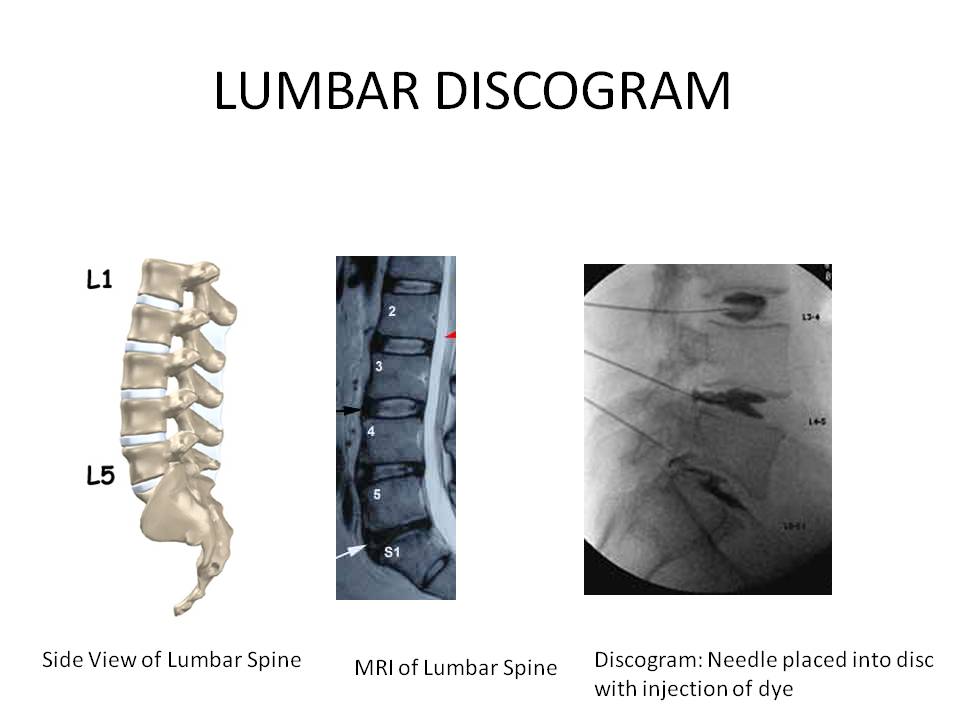Lumbar discography is procedure in which a needle is placed into the disc at two or more levels to determine whether of not a specific disc is the source of pain. Is the pain coming from the L4/5 disc or the L5/S1 disc? The procedure is performed with intermittent x-ray. Once the needles are in the center of each disc, contrast is injected into the disc. A patient’s response is graded as follows:
P0: no pain: a common response in a healthy disc
P1: painful, but not identical in quality or location to the patient’s daily pain.
P2: painful, identical in character, quality and location.
Discograms are strictly a pre-surigcal procedure which tells the surgeon which level to operate. They have no therapeutic benefit. I have had two discograms and they HURT!
A recent study demonstrated that lumbar discograms accelerate disc degneration.
Patients are often misinformed about discograms.
AJ was a 23y/o with 6 month history of low back pain following a rear-end motor vehicle injury. Pain was constant in duration, 6/10 in severity, progressive in nature and localized in her lower back, right =left with radiations into her buttocks. MRI was significant for mild degeneration of the L5/S1 disc. Physical examination was significant for tenderness in the lower lumbar spine with extension and rotation. She had no treatment to date: no physical therapy, chiropractic care, trial of good quality fish oil, massage or evaluation by a pain specialist. Her PCP referred her to a surgeon for evaluation of her back pain. She was scheduled for a discogram which she thought was going to help here back pain.
Evaluation of all possible sources of pain is essential. For lumbar back pain common causes include:
- myofascial: dysfunctional muscles
- facet dysfunction:
- ligamental dysfunction: treated with proloterhapy
- SI joint dysfunction:
- Disc dysfunction.
The Centeno-Schultz Clinic is committed to identifying the cause of a patient’s pain and designing an proper treatment plan utilizing state of the art therapies.

